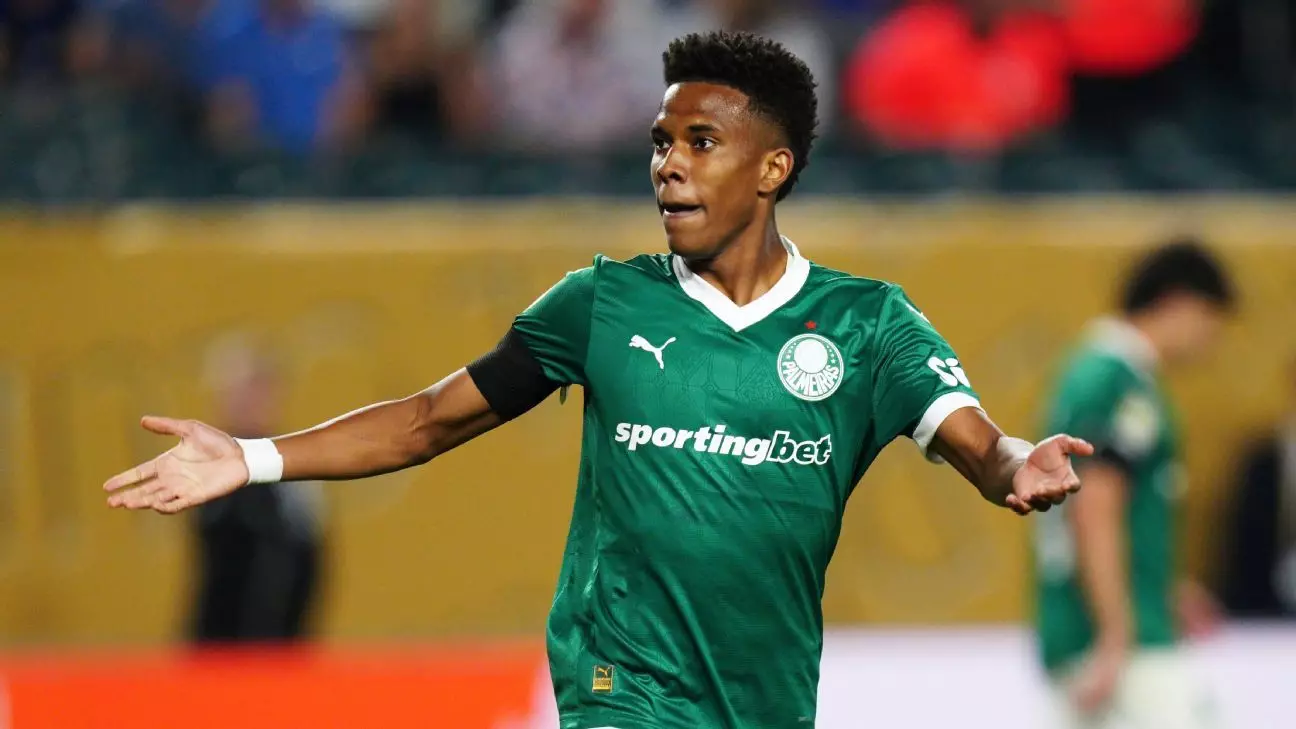The recent performance of Estêvão Willian during the FIFA Club World Cup quarterfinal drastically illuminated the importance of nurturing young talent in modern football. This 18-year-old prodigy, making his final appearance for Palmeiras before a high-profile transfer to Chelsea, showcased an extraordinary blend of skill, resilience, and mental strength. His remarkable goal, which temporarily equalized Palmeiras’ score, proved that raw talent alone is insufficient; the true challenge lies in fostering this talent into a consistent and impactful force on the pitch. Chelsea’s invested €33.8 million demonstrates their confidence in his potential, yet his journey underscores the necessity of a carefully calibrated development environment.
The notion that a young player’s rise is merely about talent ignores the complex psychological, cultural, and physical hurdles they face moving abroad. Estêvão’s performance highlights not just individual brilliance but also accentuates the importance of proper support and mentorship. Chelsea’s management must understand that investing heavily in youth means accepting a period of adjustment, mistakes, and learning. If overlooked, the potential for burnout or underperformance increases, something many clubs have painfully experienced. Thus, Chelsea’s challenge isn’t just acquiring a gifted player but also orchestrating an environment conducive to his growth.
Lessons From Palmeiras: The Art of Caring for Young Stars
Palmeiras coach Abel Ferreira’s heartfelt advice underlines a vital truth: young players require more than technical training—they need emotional and contextual support. Ferreira’s plea to Chelsea to “embrace” Estêvão and “take care of him” is a reminder that nurturing talent is a collective responsibility. Such a warning is particularly relevant when a player transitions from the comfort of Brazilian football, with its vibrant culture and familiar surroundings, to the often-cold, fast-paced atmosphere of English football.
Ferreira’s comments also reveal an understanding of the physical development of players at that age. While Estêvão may appear slim and light, Ferreira emphasizes his resilience and strength, traits that often go underappreciated. Recognizing this dichotomy is crucial for Chelsea’s coaching staff—young players often need patience and tailored training to unlock their full potential without risking injury or burnout. More importantly, the emotional support that Ferreira advocates includes acclimating Estêvão to cultural differences, such as the limited sunlight and altered lifestyle in England, which Ferreira humorously mentions.
Their dialogue exemplifies best practices in athlete management: a balance of praise, honest assessment, and cautious guidance. This holistic approach, emphasizing both skill and character, ensures that the player’s growth aligns with the club’s long-term ambitions. Chelsea should view this process not just as a transfer but as an investment in a person’s development.
The Role of the Coach: Embracing the Challenge of Developing Young Talent
Enzo Maresca’s optimistic remarks about Estêvão’s night in Philadelphia reinforce the importance of coaching philosophy rooted in patience and support. His acknowledgment of the player’s talent, coupled with a recognition of the adaptation phase, signals a mature understanding of the young athlete’s trajectory. Maresca’s comment—calling it a “perfect night”—underscores the role of a coach as both a motivator and mentor, particularly for young players who carry enormous expectations.
However, this optimism must be tempered with pragmatic strategies. Moresca’s statement about helping Estêvão adapt highlights an evolving coaching paradigm that emphasizes personalized development plans, mental health support, and cultural integration. Chelsea’s coaching staff must stay vigilant, ensuring that the pressure of such a hefty transfer fee does not overshadow the player’s need for gradual integration. Fostering an environment where mistakes are viewed as learning opportunities rather than failures is crucial, especially with a player who possesses the talent to change matches single-handedly.
Furthermore, the club’s leadership must recognize that developing a star is a dual process of honing technical skills and cultivating confidence. The young forward’s immediate impact hints at immense potential, but sustainable success will depend on long-term investment, strategic mentorship, and patience. This paradigm shift from a results-oriented approach to one focused on holistic development could define Chelsea’s success story with Estêvão and similar talents in the future.
Integrating Talent into a Competitive Landscape
The global football scene is increasingly competitive, especially for young talents making the leap from South America to Europe. Chelsea’s signing of Estêvão exemplifies a broader trend: clubs chasing top young prospects to stay ahead in the football arms race. Yet, the true test lies beyond buying talent—it is about strategic integration, continuous development, and wise management.
Estêvão’s debut performance indicates that he’s more than just a product of scouting; he’s a player capable of making an immediate impact, which can elevate the team’s ambitions. But to truly harness his potential, Chelsea must create a culture that promotes learning from setbacks, values individual growth over immediate results, and fosters a supportive environment both on and off the pitch.
In the end, the young star’s journey will serve as a microcosm of how football clubs can evolve in nurturing future legends. Chelsea’s role goes beyond monetary investment—it’s about building a holistic system where talent does not just shine temporarily but flourishes into a cornerstone of future success. The trajectory of Estêvão Willian, if managed with insight and compassion, could set a precedent for how top clubs develop their brightest stars in the years to come.


Leave a Reply